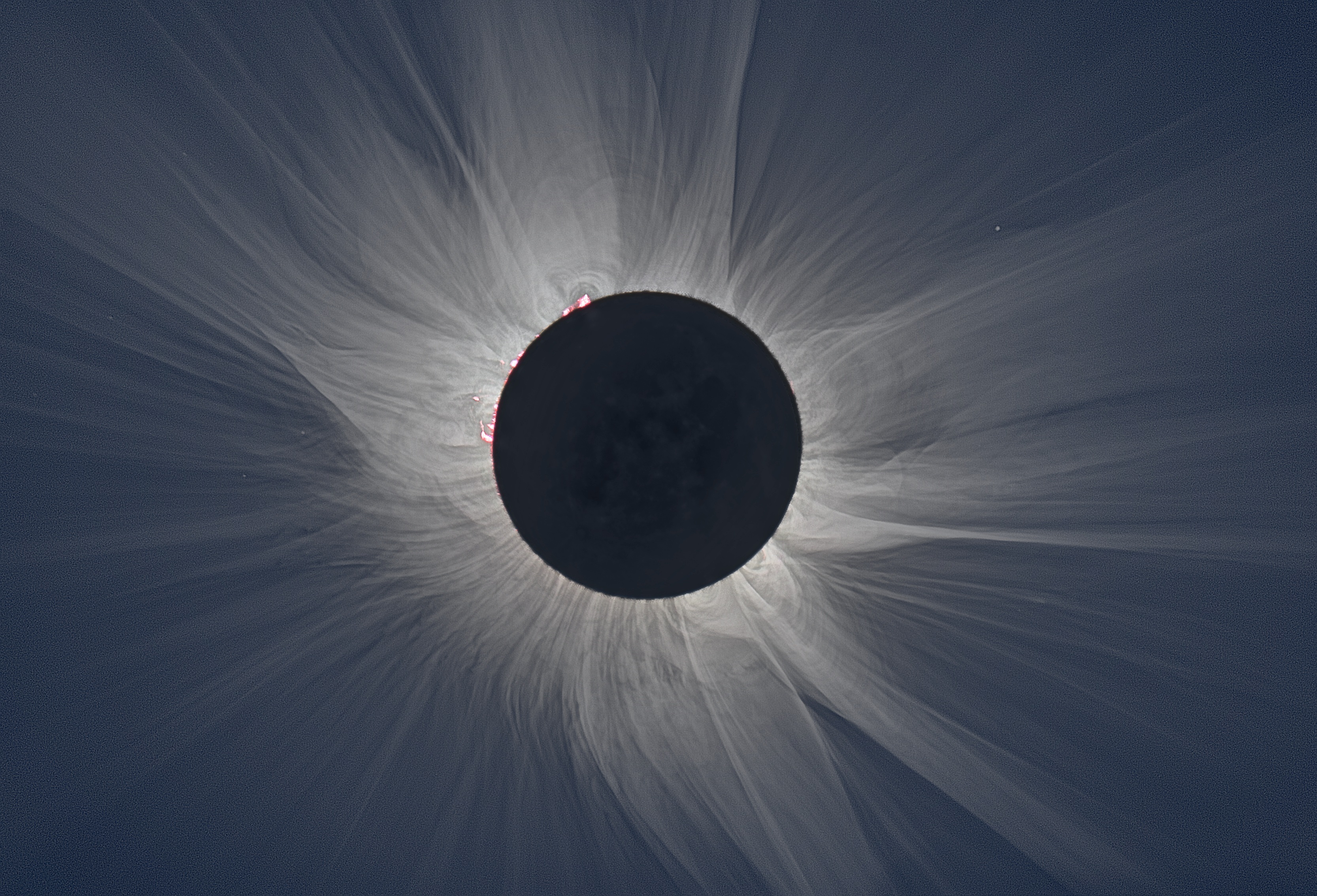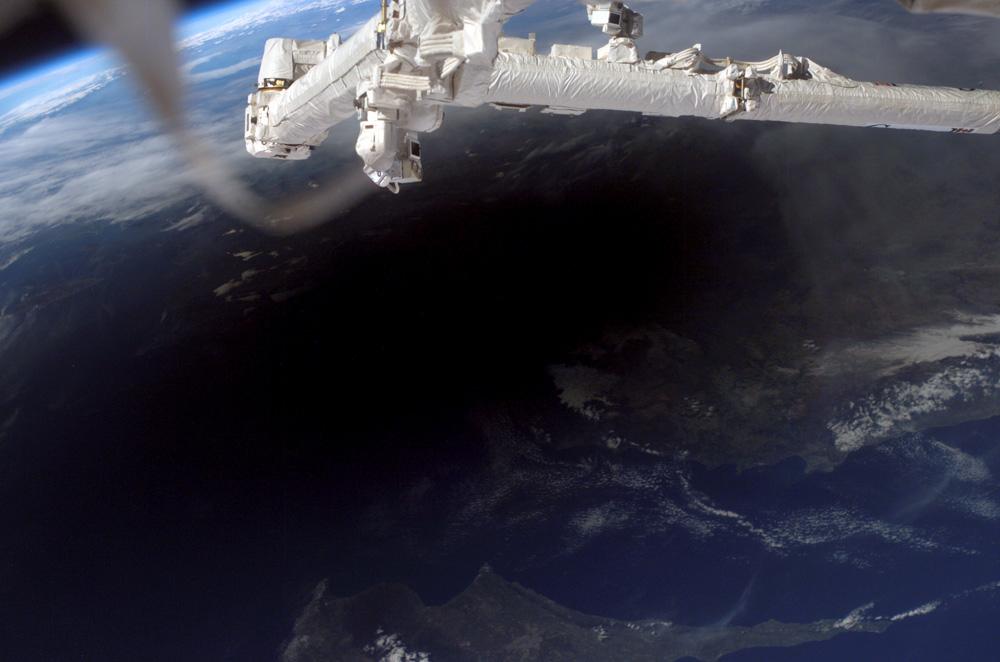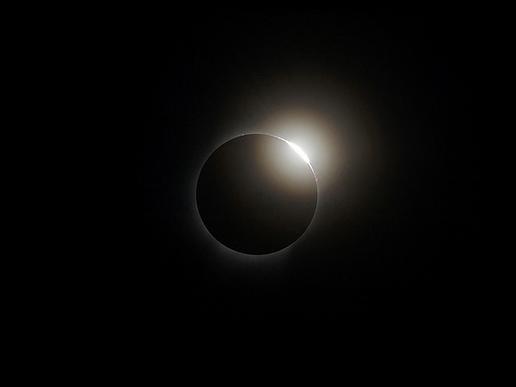Here Are the Most Amazing Things to Observe During a Solar Eclipse
A total solar eclipse is such a spectacular sight that it can render even experienced observers and scientists spellbound. In the excitement, viewers often completely overlook secondary phenomena.
There is so much more to a total solar eclipse than the sky simply getting dark for a couple of minutes. For that brief interval of time, the world as you know it completely transforms.
If you're planning on seeing the total solar eclipse on Monday (Aug. 21), here is a detailed, step-by-step guide to what you can expect to see. (Note that you probably won't see everything mentioned here, but if you know what to look for, you'll have a better chance of seeing it!) You can also visit Space.com for a live solar eclipse webcast, courtesy of NASA, beginning at 12 p.m. EDT (1600 GMT).

Partial phases

If you're inside the path of totality, the partial phases of the eclipse will last for over an hour both before and after totality. If you are using eclipse glasses or a welding filter at the moment that the partial eclipse begins, you won't notice anything out of the ordinary, but just be patient and wait a few minutes. Soon, you will see a very small dent appear in the upper right-hand edge of the sun (or, if you are projecting the sun's image, it will appear on the sun's lower left edge). This will be the dark disk of the moon moving slowly in front of the sun.
At first glance, it will be just a small bite; then, you'll see a little more, and a little more similar in movement to the minute hand of a watch. But because the sun is so bright, you might be a bit disappointed at first, since the sky doesn't appear to be darkening at all.
But when the sun is more than half covered, you'll notice that, ever so slightly, the world is indeed getting a little darker. At first, it will seem as if the sun is shining through a thin cloud, and yet the shadows that are being cast are as clear, dark and distinct as if it were bright and sunny.
By the time about 80 percent of the sun is covered, the sky illumination appears rather peculiar. Also, the shadows are becoming sharper as the sun — now reduced to a thick crescent shape — continues to get thinner and thinner.
Get the Space.com Newsletter
Breaking space news, the latest updates on rocket launches, skywatching events and more!
As totality draws nearer and the sky grows still darker, you might even feel a little nervous, for here is a situation that neither you nor any of the people who might be around you have any control over. Only now can you begin to understand why eclipses both fascinated and terrified ancient people.
The final few minutes before totality are always filled with indescribable excitement.
Slender sliver
As the unblocked part of the sun rapidly turns into a thinner and thinner crescent, the brightness of the sky fades, producing an effect quite different from the darkness that arrives at the end of a sunny day. The distant landscape is enveloped in a strange, dim, eerie, silvery light. As the sun's crescent shrinks to a tiny sliver, the temperature may dip several degrees or more, and a cool wind may suddenly spring up.
People around you may be anxiously chattering as they too sense the differences in the surroundings. As they attend to their cameras and experience the changes taking place all around them, you may also become aware of birds chirping excitedly. Seabirds may fly toward the shore seeking their normal roosting places in anticipation of approaching nightfall. Other animals might slink home. Flowers close. Crickets and katydids chirp.
A few minutes before totality, you might also be fortunate enough to catch a fleeting glimpse of faint, flickering, shimmering waves of light and dark, scurrying rapidly across the ground or along the sides of buildings.
Called shadow bands, these mysterious stripes of light and shade are caused by the sun's last rays being distorted by Earth's turbulent atmosphere, the same kind of turbulence that causes the stars in our night sky to appear to twinkle.
Approaching shadow

Those last few seconds before totality are also the time to look for the approach of the moon's dark shadow by concentrating on the northwest part of the sky. It will be surging toward you at almost 30 miles (48 kilometers) per minute and may first appear low on the horizon as a looming area of deep gray, tinged with hues of red and orange. Any clouds that might be between you and the shadow will appear to darken dramatically as if some great storm were building off in the distance. The shadow will appear to widen as it gets closer, filling more and more of the western sky like some indistinct curtain of deep darkness, indicating that totality is nearly at hand.
By now the daylight — or what is left of it — will be very weak.
Baily's beads
As the sun's crescent narrows to just a thin line, it will suddenly break up into dots and points of light called "Baily's beads." This effect occurs as the mountains on the moon reach into the thin crescent sun and block parts of it from view while valleys permit the last remaining rays of sunlight to form glittering spots, or beads, at the edge of the moon's black disk.
This effect lasts for only a few moments.
During those final few seconds before totality, it's time to remove your eclipse glasses, for it is now safe for you to look directly at the sun!
Diamond ring

As the final bead of sunlight is about to wink out, an explosion of light brightens the region around the darkened sun. A thin ring of light from the sun's outer atmosphere — the corona — begins to encircle the darkened sun, with just a last bead of sunlight remaining.
That final bit of sunlight resembles the glow of a brilliant diamond, and together with your first view of the thin ring of the corona, this appears to create a magnificent "diamond ring" in the sky.
Meanwhile, you'll likely hear oohs and aahs, gasps, shouts, and screams from people all
around you (you may even be shouting too!) as the moon completely covers the sun.
This is it!
Totality at last!
The whole surrounding landscape suddenly plunges into darkness, thy sky appearing very similar to the way it looks about a half hour after sunset or a half hour before sunrise. A few bright stars and planets pop into view. At this moment, you might ask yourself if this is really happening or if it is a dream. Of course, it is all real, but still hard to believe.
This is what people have traveled hundreds, even thousands of miles and waited many years to see.
Some are dumbfounded. Some pray. Some cry out. Some even find their faces awash with tears — of joy.
Cameras click. Video cameras hum. Tripods are quickly repositioned to get a better view. Interestingly, after the initial screaming and shouting subsides, most people quickly calm down and settle into a sort of quiet happiness. They scan the weird scene and try to enjoy as many of the fantastically strange sights as possible during the all-too-short period of total eclipse.
The corona
As totality begins, the crown of the eclipse — the beautiful corona — now appears in full view. Pearly white and as bright as a full moon, it stretches out from the darkened sun for millions of miles. The corona is the glowing upper atmosphere of the sun, and it is intensely hot. The temperature within it rises to more than a million degrees Fahrenheit, and it always surrounds the sun, but the sun's normal overpowering brilliance always makes it invisible — except during a total eclipse.
The corona appears brightest closest to the sun, gradually becoming dimmer farther away from the sun. Its appearance depends on the level of solar activity, which refers to the rate of prominences (bands of hot material), flares and explosions emanating from the sun's surface. Currently, we are at sunspot minimum, so predictions are that the corona will display long, equatorial streamers shooting out in one or two directions. Its outer edges may appear ragged or end in brush-like tips.
Composed of electrically charged material rushing outward from the sun at a few million miles per hour, the size and shape of the corona depends on the number of sunspots on the sun's surface. These, in turn are triggered by the star's ever-changing magnetic activity. During totality, eclipse watchers can view the corona safely without using any protective filters or viewing screens.
The prominences
But just as you are recovering from getting your first good look at the corona, you may also notice what look like a few rubies hovering around the blackened disk of the sun. These are called solar prominences, tongues of hot hydrogen gas rising from the lowest layer of the sun's atmosphere, called the chromosphere. They leap for tens of thousands of miles above the surface of the sun, far enough to be visible above and beyond the eclipsing moon as tiny flames of red or electric pink.
Again, it is the magnetism distributed over the sun's surface that determines the size and shape of these prominences, along with just how many will be visible.
Sometimes only one, and at other times as many as five or six can be seen. You'll get a very good view of them using binoculars or, better still, a telescope. As with the corona, during totality, you'll see them directly without the use of filters or viewing screens, which you MUST use to observe the partial phases.
Stars and planets
Once you are able to tear yourself away from the sun, you can view other celestial objects. The most obvious will be the brilliant planet Venus, shining like a dazzling white jewel and positioned well to the right of the sun.
And at an even greater distance, to the sun's left, will be Jupiter, though it will not shine quite as brightly. A few stars may be visible here and there, and if you have binoculars, you might notice a bluish one that will be plainly visible just to the left of the darkened sun. That will be Regulus, which is found in the constellation Leo and is one of the 21 brightest stars in the sky.
The combination of darkness and starlight at midday always helps to create a lasting memory of a total eclipse.
Sky colors
As for the overall sky illumination, it will be unlike any dusk or dawn you have ever experienced.
Overhead, the sky will appear a deep shade of blue, while a weird orange-yellow tint will form a bright border all around the horizon. That's because far off on the horizon you are looking out beyond the edge of the dark shadow where the sun is still shining, but only as a thin crescent.
As the end of the total eclipse approaches, the northwest sky, which is the direction from which the shadow first approached, will be getting noticeably brighter.
The sun returns
And then suddenly, another explosion of light!
Another diamond ring forms; this time the diamond appears on the opposite side of the sun from where the first one appeared. This diamond penetrates the corona, as a sliver of sunlight suddenly appears.
And, as quickly as it first appeared, the corona vanishes!
Back on with your eclipse glasses! Cover your eyes!
The crescent sun grows, seemingly much faster than it had before the beginning of totality. Some people may clap in appreciation to mark the end of this spectacular sky show. Others might loudly congratulate their companions. Many are probably still taking photographs or shooting video as the sun emerges. Still others scan the rapidly brightening sky for one last look.
More than 99 percent of sun is still covered, and yet, compared to what it was like just moments ago, it seems like almost full daylight has returned. At that moment, you will be able to understand why it is so very important to get yourself into the path of totality, for even with this tiniest bit of the sun left uncovered, you would miss so much!
And curiously, although a narrow sliver of the sun now illuminates the sky, many who have just witnessed the total eclipse pay little or no attention to it. This happens even though only several minutes before, this narrow sliver of the sun was the source of great excitement and anticipation. And more than an hour of partial eclipse remains, as the moon now moves slowly off of the sun.
But most viewers are more than satisfied with the amazing sights they have just seen and begin to pack up their equipment. For all who made the effort to chase the eclipse and experience it, nature's most exciting spectacle has run its course.
And the only things that most people can think of after such an exciting experience are, "When is the next one?" and, "When can I see this again?"
Editor's note: Find out how the solar eclipse will look from your location — Space.com has teamed up with Simulation Curriculum to offer this awesome Eclipse Safari app to help you enjoy your eclipse experience. The free app is available for Apple and Android, and you can view it on the web. If you take an amazing photo of the Aug. 21 solar eclipse, let us know! Send photos and comments to spacephotos@space.com and share your eclipse experience with us at eclipse2017@space.com.
Follow us @Spacedotcom, Facebook and Google+. Original article on Space.com.
Join our Space Forums to keep talking space on the latest missions, night sky and more! And if you have a news tip, correction or comment, let us know at: community@space.com.

Joe Rao is Space.com's skywatching columnist, as well as a veteran meteorologist and eclipse chaser who also serves as an instructor and guest lecturer at New York's Hayden Planetarium. He writes about astronomy for Natural History magazine, Sky & Telescope and other publications. Joe is an 8-time Emmy-nominated meteorologist who served the Putnam Valley region of New York for over 21 years. You can find him on Twitter and YouTube tracking lunar and solar eclipses, meteor showers and more. To find out Joe's latest project, visit him on Twitter.









